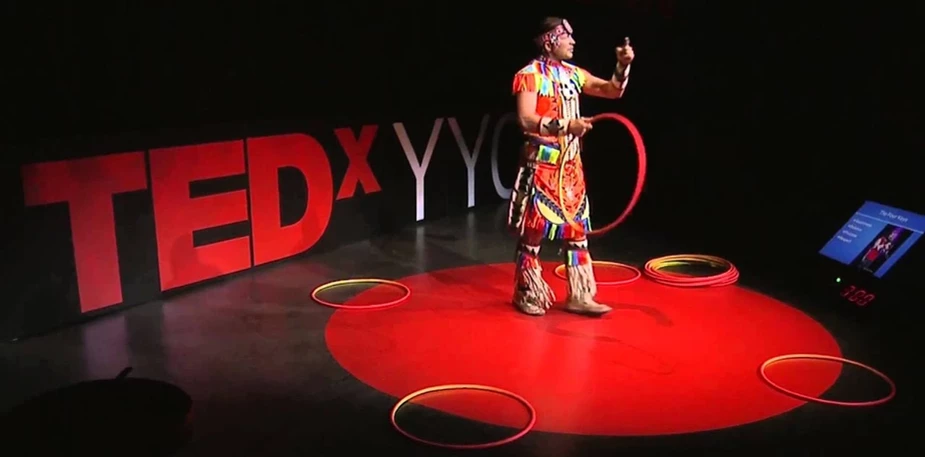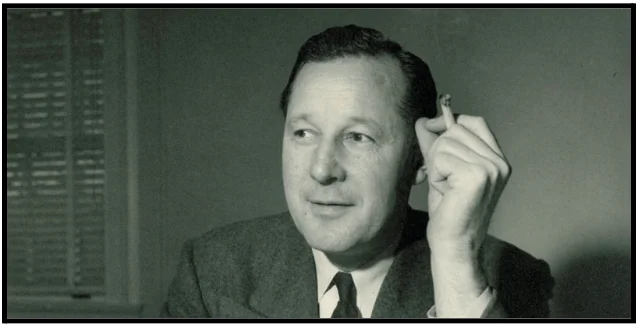Talking Big Ideas.
“Don’t hide behind the lectern!”
~ Mike Michalowicz
A few weeks ago I came across an old clip from a lecture of mine.
I’d recently read Jon Haidt’s book The Righteous Mind, and was eager to include it in my talk. And while I spent much effort thinking through my words in advance, I didn’t practice well enough on how best to deliver them.
In the short clip, I commit a classic mistake: I mindlessly move about the stage without stopping. And as a bonus, at one point I turn my back to the audience!
Novice presenters, like I was, often make these movements. Public speakers should never turn their backs on their audiences or pace constantly around the stage without stopping — these are distracting habits that can make the audience feel disconnected.
Swaying and rocking are other nervous tics to avoid. I often see presenters shifting their weight from one foot to the other. Back and forth, side to side. Or they take a step or two forward, and then rock back, without realizing it.
Standing like a statue is also awkward. No movement at all from a speaker will likely make an audience uncomfortable.
The lectern is a great place to keep a few items like water, notes, and your phone. But standing behind it the whole time creates a physical barrier between you and your audience, limiting your ability to establish a connection. This is why the TED conference had a rigid rule for years: No lecterns!
As the head of TED explains:
People truly respond to the vulnerability of a speaker who stands there unprotected by a lectern and speaks from the heart. That is human-to-human communication in its purest form.
So what’s the best way to stand and move about the stage?
In her book Speak with Impact, Allison Shapira writes: “Start on one side of the room and then walk to the other as your argument progresses. If you want to refer back to something from an earlier time, walk back to that place on the stage.”
I disagree.
This advice is similar to what formal debaters do. They pick one place on the stage, present an argument there, and then move to another spot, present another argument, and continue in this fashion.
Being intentional is important. But such structured and rigid movement feels inauthentic. I suggest three more natural approaches: using the full stage, making a semi-circle, and staying inside a circle.
USING THE FULL STAGE
For people that have lots of energy, using the full stage allows them to think and feel confident. And helps to keep their audiences engaged.
Jennifer Stefano, Kevin Hart, and Elizabeth Gilbert all use the full stage to great effect. Their personalities are different and distinct, yet brought to life and amplified by their movement.
Notice how easily they hold their audiences’ attention. Importantly, they are not mindlessly pacing. Or rigidly walking from one side to the other. They are moving naturally. And stopping and standing still to drive home key ideas.
MAKING A SEMI-CIRCLE
If you have notes you’d like to reference, but don’t want to read a script, consider making a semi circle around the lectern. You’re able to easily glance at your notes while maintaining a connection with the audience. Ideally give relatively equal time to each side of the lectern, rather than popping out in just one direction.
See how Elise Westoff delivers an excellent presentation with this approach.
STAYING INSIDE THE CIRCLE
The gold standard may be to create a circle and stay inside it. You can make the circle whatever size you want it to be.
When Joan Rivers appeared on Ed Sullivan, she held her audience rapt. She stays inside a circle about two feet wide. Matt Paprocki recently crushed a big speech from the main stage. He used a four-foot circle. We added little bits of tape to the stage during practice so he knew exactly where his space was.
Perhaps the simplest approach is a circle so tight you don’t have to walk at all.
Sir Ken Robinson took this approach in delivering one of the most popular talks of the past two decades. Notice how he stands tall with solid posture. His feet are planted, with equal weight on both. There’s no swaying or rocking. Instead he turns at the waist. His gestures and expressions are natural.
Even though his feet stay still, he is able to keep the whole audience engaged.
Trying scrolling through the clips above without sound. Focus on the speakers’ movements. Which approach appeals to you most? Which do you think would be most natural to you, and help you best connect with your audience?
Test them all. Mix them up and add your own flavor. There is no strict formula. With practice and feedback, you will learn what approach makes you feel most comfortable and confident.
Over time, you will build your own voice as well as your own movement. A speaking style unique to you.
***
![]() IDEA
IDEA
Be intentional about moving in an authentic way.
Think of a song or poem you have committed to memory. Stand up now and try delivering it to an imaginary audience. Switch between these different styles:
- Use the full stage.
- Create a semi-circle around the lectern.
- Stay within a large circle.
- Stay within a small circle.
- Keep your feet planted and turn at the waist.
What feels most natural to you?
***
If you find this useful, please subscribe to our free weekly newsletter.




